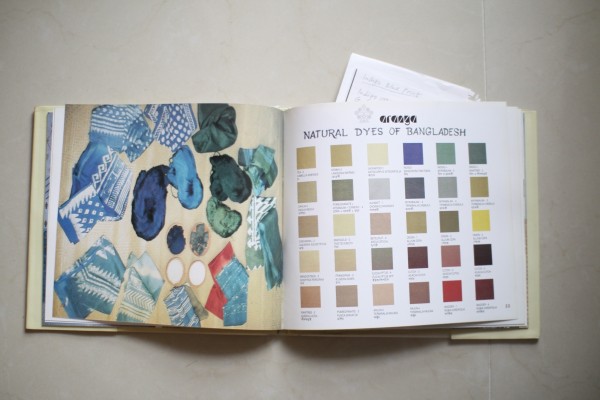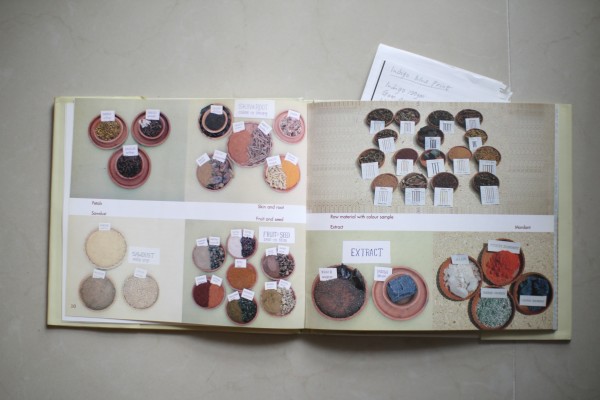かねてから、布地に木版ブロックでプリントをしてみたいと思っていました。今回のバンコク滞在中に、木版画家の友達 Ralph Kiggell氏の協力を得て試してみることになりました。ラルフは日本で木版画を学び、大変才能のある版画家として活躍しています。私も彼の作品は大好きなのです。
ラオスから帰ってきてから、そのラルフのアトリエに通い、木版画のプロセスや彫り方、プリントの仕方を教えてもらっていました。
For a long time, I have thought about printing fabric I use in my clothes with woodblocks.
While in Bangkok now, I spent two days recently with my friend and woodblock print artist Ralph Kiggell. I love Ralph’s work, own a few of his prints myself, and learned much from him during a private two-day workshop at his studio. During our time together, Ralph taught me the basics of woodblock cutting, which he studied in Japan, and we made some trial ink prints in his studio. Next, I will try “resist printing” where we are staying in Bangkok, and will continue to experiment after I return to Nagano in a couple weeks.
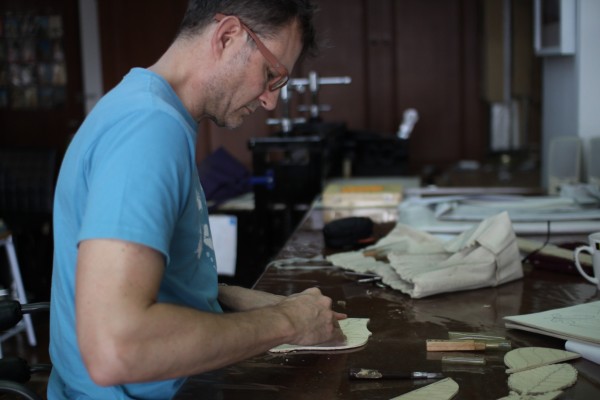
学校で紙版画や木版画を図工の授業で勉強するので、日本人には馴染みがあるものだと思うのですが、制約がある中でもかなり様々な作品ができると改めて知り版画のイメージが変わりました。インドの木版ブロックを使った布へのプリントとは全く工程が異なるものの、この辺りは工夫次第だと思います。
サッサーっと自由自在に滑らかな線を描いて板を彫り、一枚の作品に仕上げていく技は、ラルフが長年この作業に関わってきたならではのスムーズさ。さすがです。とても私には真似できませんが、彼に植物シリーズのいいデザインを作ってもらいました。これが布にのるのが楽しみです。
Of course, we all made prints and cut woodblocks while at school, but we did so with constraints, perhaps necessary in a classroom environment, but which nonetheless did not allow us to experience the wide range of techniques and styles available. The process is different from, for example, the one used in India traditionally to print from woodblocks on fabric.
It was fascinating to watch Ralph work. He designed several different leaf patterns for me, first sketching lightly with pencil on the wood surface, expressing the essence of each leaf with a few simple stokes, then carved the wood almost effortlessly it seemed, all this the result of the artist’s years of experience. Ralph carved several blocks for me, which I will use in Japan to print on fabric. We had talked about such a collaboration for years, and finally were able to do something together.
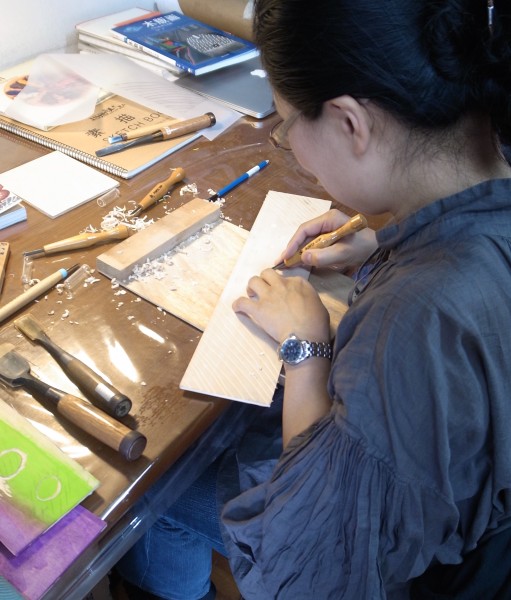
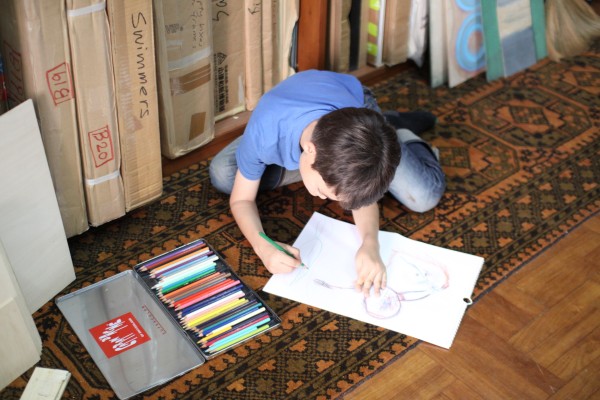
布にプリントする上で、今回参考になりそうなのが、ラルフの持っていたこのバングラディシュの植物染めの本(下)。昔ながらの木版プリントのレシピがのっていました。大変手間はかかりますが、天然の材料でプリントするヒントになりました。
インドのブロックプリントは、化学染料を使い、Tシャツにスタンプするように染料を生地にのせていく方法が主流のようです。色も派手でべったりとした質感は日本の気候には馴染まないですし、なにより健康のことが心配です。
日本でも使われている昔ながらの方法では、色を染め抜くのに糊を置いていきますが、そのレシピはもち米、米ぬか、塩、石灰など。これに加えて草木染めなら安心です。
いろいろ試して染めてみます。
Below are photos from a reference book about natural dyeing and printing on fabric in Bangladesh. One quickly sees how complicated the process can be. Recipes for dyes and mordants are given, some of which I will try back in Japan. In India today, by contrast, one sees a lot of chemical dyes used, which are bad for the environment, for the health of the dyers and printers, and ultimately for wearers of clothing made from this fabric. Traditionally, of course, plant dyes were used exclusively, and “resist dyeing” in Japan was accomplished by using natural materials as well, such as glutinous rice, rice bran, salt, lime, . . .
I want to try many different ways to print with woodblocks on fabric, after I return to Japan, and look forward to sharing the results with you.

